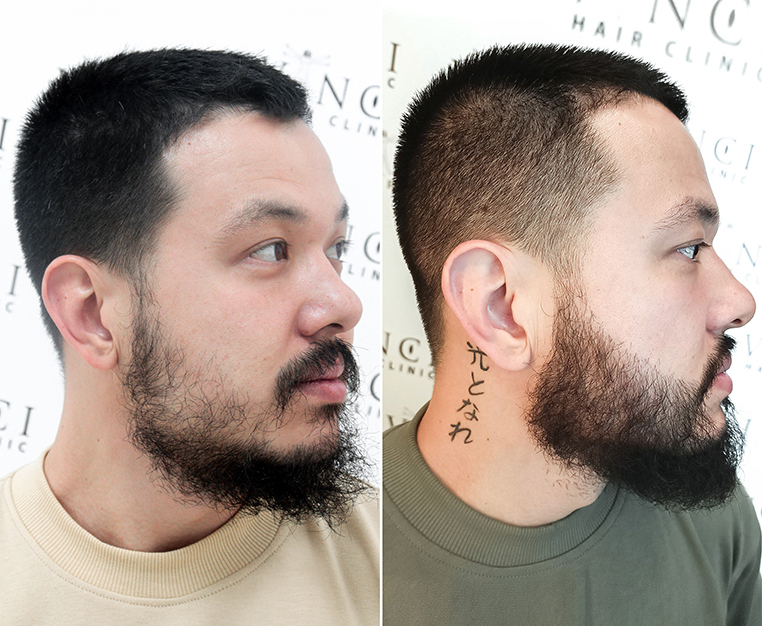Men are prone to balding with age. However, some men start losing their hair very early in their 20’s. Early hair loss is especially common if there is a hereditary component to the hair loss. Male pattern baldness is a genetic hair loss condition affecting many men in the world. Hair transplant surgery is one option for keeping hair loss at bay. Hair transplantation involves harvesting hair follicles from one part of the scalp (usually the back of the head) and implanting them in the areas affected by hair loss. A common side effect of the surgery is shock loss. This article talks about shock loss, what causes it and how to prevent it.
Shock Loss And Hair Transplants
The hair at the back of the head is genetically immune from hereditary hair loss conditions. Surgeons favour this area as a source of donor hair follicles in transplant procedures for this reason. Temporary shock loss is a typical side effect of transplant surgery. Hair loss to the donor site or transplant site are symptoms of shock loss, which is the loss of healthy hairs.
Temporary shock loss is reversible and results in the loss of healthy hairs following the harvest of follicles for transplantation. You will usually find that the hair will grow back after a few weeks of healing. On the other hand, permanent shock loss is also a possibility, albeit very rare. Damage to parts of the hair follicles during the procedure, such as the hair bulb may result in permanent hair loss. The hair bulb is responsible for hair production (the stem cells it contains), and once they suffer damage, they can no longer produce hair.
How Transplantation Causes Shock Loss
Some people mistakenly believe that a hair transplant in itself causes shock loss. This is not accurate. Shock loss may occur post-transplant for several reasons which include:
- Trauma to the area surrounding the transplant area, which may lead the surrounding hair to fall out. It is the placement of the donor grafts, which may cause trauma so neighbouring healthy hairs.
- Temporary loss of blood supply to the donor hair follicles occurs between transplantation and implantation. Lack of blood flow may cause the grafts to shed some of its hair and is a temporary situation. New hair should grow back within six weeks of the surgery.
- Follicular unit transplantation is a type of hair transplant procedure which involves the harvesting of a strip of hair from the donor site. The harvest area requires sutures to close the scalp. If the sutures are too tight, this may cause a restriction of blood flow to the area. Consequently, hairs in the vicinity will fall out. As the wound heals, the hair should grow back; this may take up to six weeks to start seeing new growth.
- Permanent shock loss may result if a surgeon transects hair follicles during the harvesting process. Going to a highly skilled surgeon with modern technology for your procedure reduces the risk of hair loss due to this reason.
It is possible to take some steps to stop shock loss from putting a dampener to the outcome of your hair transplant procedure. Your surgeon will explain some of the things you can do before your procedure to ensure you lose as little hair as possible. Next, you’ll learn about some of these steps.
Keeping Shock Loss Under Control
Some patients do not experience shock loss, although it is nearly an unavoidable consequence of hair transplant surgery. There are three significant ways surgeons use to control and minimise the occurrence of shock loss.
- Firstly, they prescribe medication such as Minoxidil which increases blood flow to the scalp before the surgery.
- Secondly, they make sure they transplant a sufficient number of grafts to ensure coverage of the recipient site to minimise the occurrence of shock loss.
- Finally, shaving the donor area gives the surgeon a better view, and they can plan graft placement better.
However, these three precautions alone are often not enough to avoid temporary shock loss.
It usually all comes down to the skill and expertise of the transplant surgeon. Ensuring that follicle extraction does not damage hair bulbs is a crucial part of the procedure.
Picking a surgeon with the right amount of skill and experience with hair transplant surgery will make a significant difference to the outcome you will experience.
Choosing The Right Surgeon To Prevent Shock Loss
You will experience some form of temporary hair loss following your hair transplant surgery. Your surgeon will give you advice on how to minimise the risk of permanent shock loss before the procedure. Finding the best clinic and surgeon goes a long way in ensuring a positive outcome of the treatment. Vinci Hair Clinic doctors are fully licensed, skilled, and have carried out hundreds of hair transplant procedures. If you’d like to know more about what the procedure involves and have someone answer your questions, contact the clinic today.



